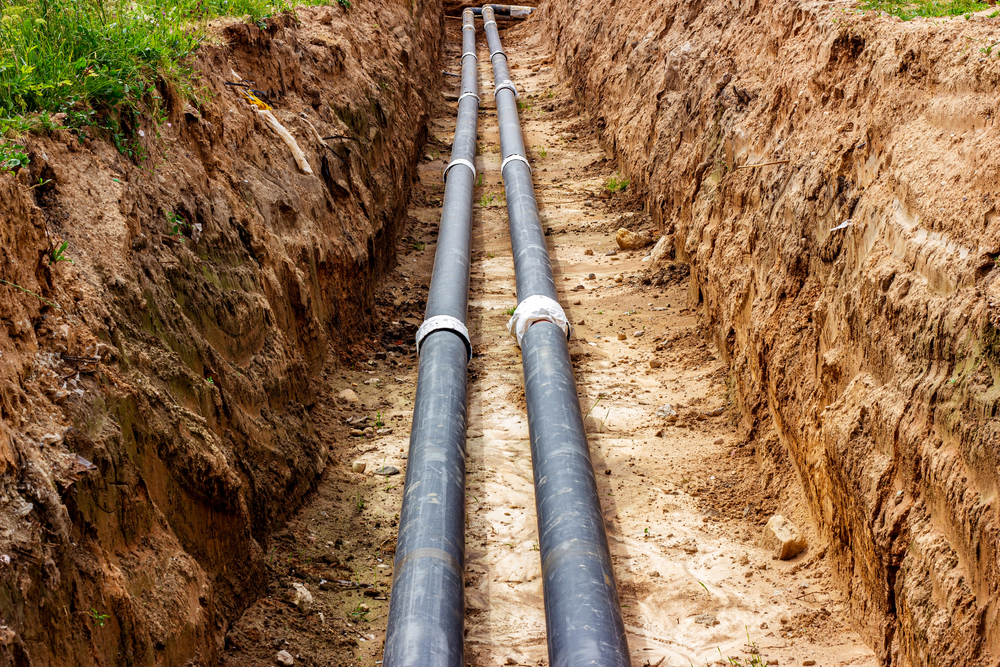The depth at which water lines should be buried is not just a trivial question but a fundamental aspect of ensuring a functioning water system. The key here is to protect the pipes from freezing during the cold winter months. The proper depth ensures that the water pipe remains below the frost line, where the ground freezes, which varies widely depending on geographic location and local climate. Generally, a good rule of thumb is that water lines need to be buried at least a few feet deep, well below the frost penetration layer.
Understanding how deep to bury water lines involves considering the unique conditions of your location. In regions where winter is particularly harsh and ground freezes are deeper, water pipes must be buried deeper to prevent the adverse effects of frozen ground. This strategic depth helps maintain the integrity of the pipe, preventing disruptions like bursts or water contamination, which are common in shallower installations.
So, how deep does a water line need to be buried? It hinges significantly on understanding and adapting to these environmental conditions.
Understanding Water Line Basics
When it comes to understanding water line fundamentals, it’s crucial to recognize that these installations are more than just burying pipes underground. Water lines serve as the lifeline of your home’s water supply, carrying fresh water to where it’s needed. The depth at which these lines are installed is critically determined to protect them from external pressures and environmental factors, especially freezing temperatures that can lead to cracked or burst pipes.
The water line burial depth isn’t a one-size-fits-all number. It must be calculated based on several key factors, including:
- Frost depths
- The thermal conductivity of the soil
- Potential mechanical disturbances
This baseline understanding ensures that when you install or repair water lines, you’re equipped with the knowledge to do it right, minimizing the risk of costly future repairs.
Factors Affecting Water Line Depth
Climate and Frost Depth
Climate plays an undeniable role in determining the frost depth in a particular area. In regions known for harsh winters, the ground can freeze several feet deep, requiring water pipes to be installed even deeper to avoid the freezing temperatures. The consistent frost line data provided by local weather services can be incredibly helpful for understanding the seasonal dynamics of your locale. For example, in Denver, CO, the frost level can be anywhere from 40 to 50 in below ground. And the closer you get to the mountains, the deeper it gets!
In addition to seasonal frost depths, occasional extreme weather conditions like heavy snow cover can also insulate the ground and affect frost penetration. This natural insulation might protect pipes from freezing. With that in mind, local weather patterns and frost depths need to be monitored and considered each year to maintain the integrity of your water system.
Soil Type
The composition of the soil in which water lines are installed is critical. Soil acts as a natural insulator; however, its effectiveness depends on its type. Loamy and sandy soils, which drain well, are less likely to hold onto cold temperatures compared to clay-rich soils, which can maintain colder temperatures longer and increase the risk of pipe freezing.
Considering soil conditions is not just about frost prevention but also about installation ease. For instance, rocky or compacted soils may require specialized equipment to dig deeper or might influence the decision on the type of pipes used, as more durable materials may be necessary to withstand the stress of harder soils.
Local Building Codes
Local building codes are indispensable when determining the depth at which to bury water pipes. These codes are designed not only for safety and efficiency but also to align with the regional guidelines that take into account local environmental conditions, frost levels, and soil types. Building codes typically specify minimum depth requirements for water lines to ensure they are protected from freezing and other physical damages.
Compliance with these codes is a matter of legal necessity as well as a practical component of building a reliable water system. These regulations are updated periodically, reflecting changes in climate patterns and technological advancements in water line installation techniques.
Standard Depths for Water Lines
Determining the standard depths for water lines involves more than just digging a trench; it requires a detailed understanding of local frost depths and soil conditions. Typically, water lines are installed at least 12 to 18 inches below the local frost line to safeguard against freezing. However, in colder regions where the ground freezes more deeply, water pipes may need to be installed up to 48 inches or more below the surface. This depth ensures that the pipes are well insulated by the earth above, which acts as a barrier against the cold, thus preventing frozen pipes.
The average depth at which water lines are buried also accounts for the need to protect them from potential physical damage due to surface activities or construction work. By setting these standards, communities can help ensure a reliable and safe water supply system that minimizes the risk of interruption or contamination.
Ready to Upgrade to New Water Lines? Contact Squeak’s Plumbing Heating & Air!
Whether you’re upgrading old lines or installing new ones, Squeak’s Plumbing Heating & Air is here to help you every step of the way. As Denver’s best plumbers, we will ensure that your water lines are installed at the proper depth and comply with all local building codes, giving you peace of mind all year round. Schedule a consultation today, and let’s get your water system running flawlessly!





